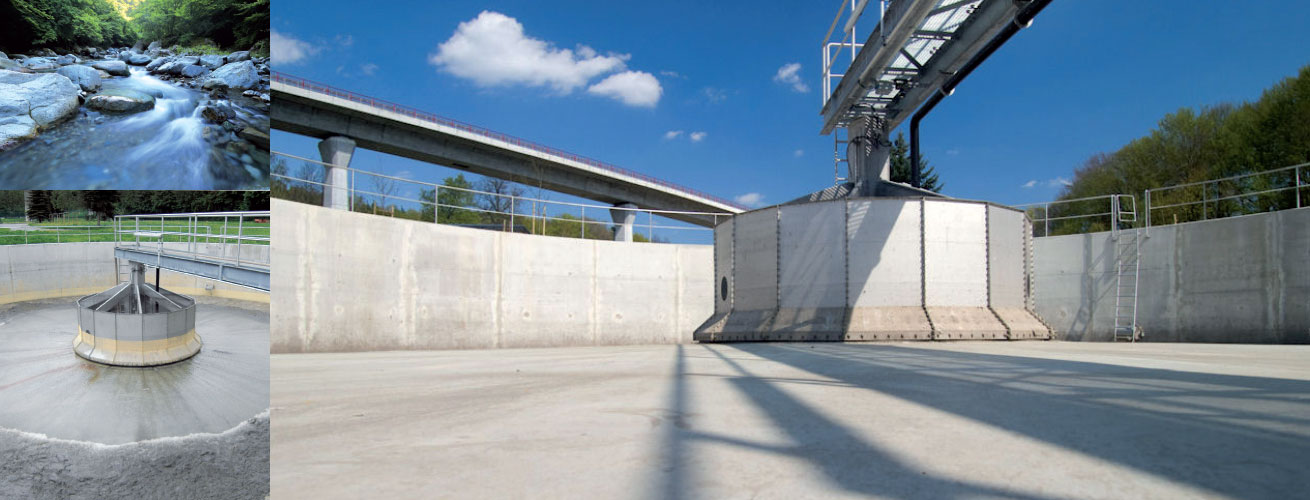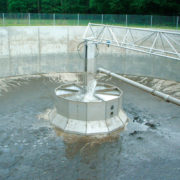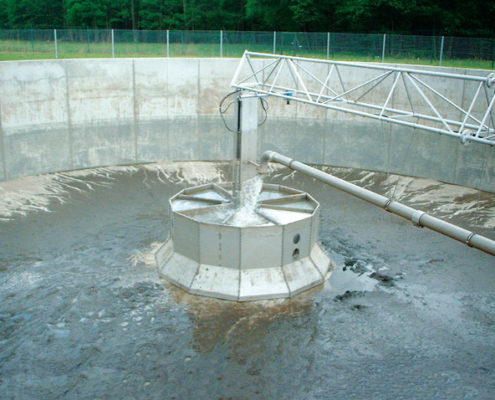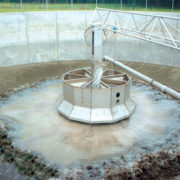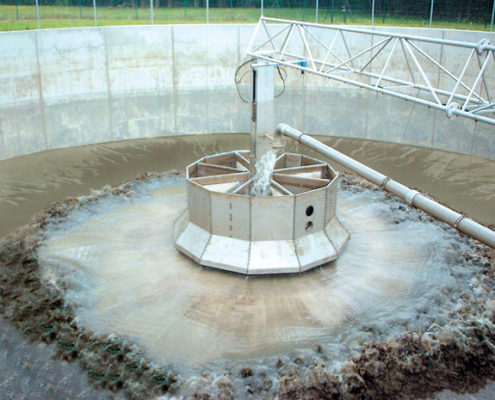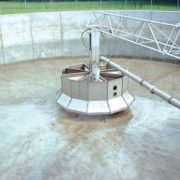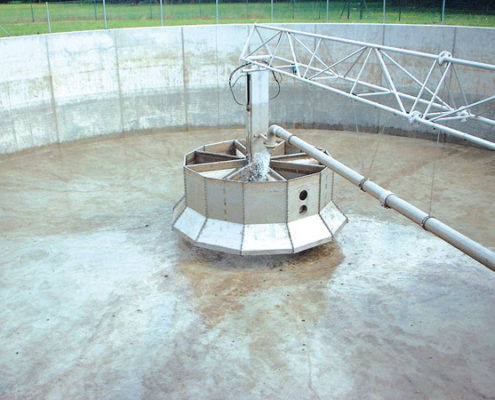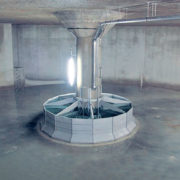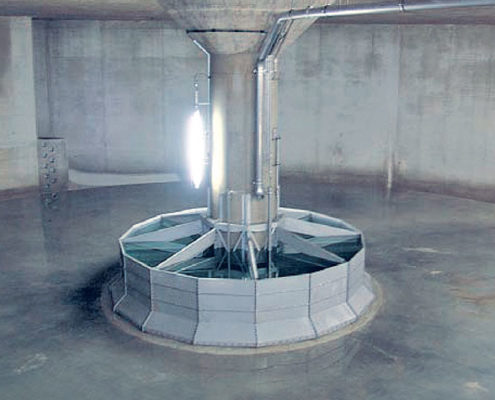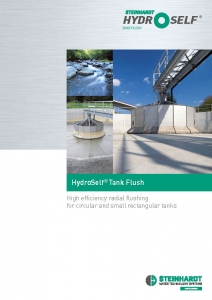High efficiency radial flushing for circular and small rectangular tanks
The Challenge
Most flushing systems available on the market for circular and small rectangular tanks are uneconomical in comparison with the construction costs. These tanks have to be cleaned manually, especially when there is no electric power at hand. Circulation power units (mixers), which can only be powered electrically, counteract the sedimentation process for which the tank is designed.
The Solution
The HydroSelf® Tank Flush for circular and small rectangular tanks is a container-ised flushing system. It is placed on a base plate with central guide column to which the container guide and reservoir enclosure are connected. The circular outer wall on the HydroSelf® provides the water storage reservoir. The size of the reservoir will depend on the size of tank to be cleaned. The filling occurs by means of a flap valve near the ground or by a filling pipe or by the stored storm water flowing over the top of the unit and filling the centre reservoir. After impounding, the retained combined water is situated in the flush container ready to be released once the storm tank is emptied. The shape of the outer reservoir wall permits the retained water to assist with the lifting of the centre unit which, when triggered, will allow the water to flow under the retaining container. The centre reservoir container is opened by means of float technology or ultrasonic detector, then the whole container wall is raised and a radial flush wave occurs.
The Functional Principle
Phase I — Dry weather
In dry weather the storm tank is empty.
Phase II — Stormwater
When it rains the circular attenuation tank is filled. The float which is positioned in the receiving sump signals the flushing unit to lock the closure mechanism of the reservoir. The flushing container is filled via the flap valve proportionate to the water level in the attenuation tank. Even with partial filling there is enough flushing water
in the container to provide a reasonable cleaning wave.
Alternatively the storm tank fills to a level that fully charges the reservoir.
Phase III — After stormwater
After a storm event the tank empties, leaving the flushing water retained in the reservoir container. The sloping wall of the reservoir creates an upward force due to the shape of the outer wall. When the flushing sump is emptied, the float falls and unlocks the reservoir container.
Phase IV — Flushing
Once unlocked, the force of water against the outer reservoir wall raises the whole container upwards releasing the water in a powerful flushing wave. The water flows over the whole tank floor re-mobilising the settled debris and transports it to the receiving sump leaving the floor clean.
The Advantages
- automatic filling, even with partial inflow
- float technology with no external power so no operating costs
- electro-hydraulic control optional
- optimal cleaning results even with heavier deposits
- no additional con-struction technology necessary
- durable
- manual flushing possible
- flexible fitting
Cost effectivenes
- very inexpensive
- operation without external power
- retrofit possible –
- even through small manholes
- low maintenance
- operationally safe

